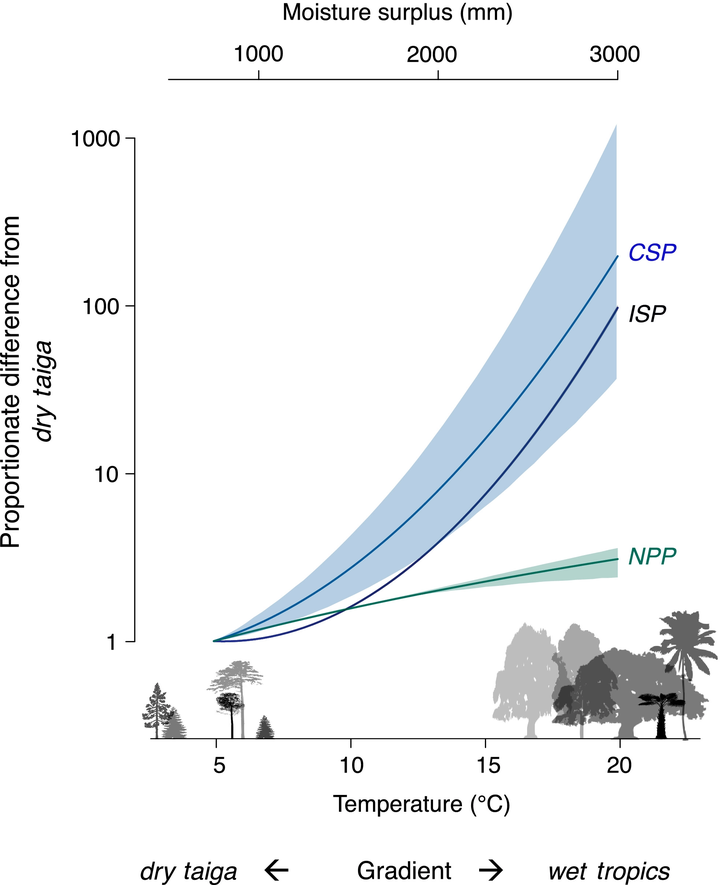 Title: how individual seed productivity (ISP, seed mass per tree basal area), community seed productivity (CSP, seed mass per forest area), and net primary production (NPP) will change along the climate gradient from day Taiga to wet Tropics. Curves are sections through surfaces (dashed lines), with scales for moisture surplus (above) and temperature (below). Curves are in proportion to values in cold, dry conditions. Confidence intervals (95%) are not visible for ISP due to the large number of trees.
Title: how individual seed productivity (ISP, seed mass per tree basal area), community seed productivity (CSP, seed mass per forest area), and net primary production (NPP) will change along the climate gradient from day Taiga to wet Tropics. Curves are sections through surfaces (dashed lines), with scales for moisture surplus (above) and temperature (below). Curves are in proportion to values in cold, dry conditions. Confidence intervals (95%) are not visible for ISP due to the large number of trees.
Abstract
Lack of tree fecundity data across climatic gradients precludes the analysis of how seed supply contributes to global variation in forest regeneration and biotic interactions responsible for biodiversity. A global synthesis of raw seedproduction data shows a 250-fold increase in seed abundance from cold-dry to warm-wet climates, driven primarily by a 100-fold increase in seed production for a given tree size. The modest (threefold) increase in forest productivity across the same climate gradient cannot explain the magnitudes of these trends. The increase in seeds per tree can arise from adaptive evolution driven by intense species interactions or from the direct effects of a warm, moist climate on tree fecundity. Either way, the massive differences in seed supply ramify through food webs potentially explaining a disproportionate role for species interactions in the wet tropics.